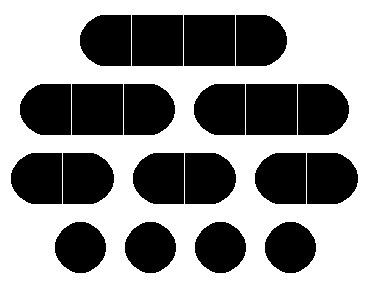Battleships – Hard

Download puzzle & solution
Share puzzle
Our puzzles are completely free. Please support this website by recommending it to your friends and family. Thank you!
New puzzle
About Battleships
Battleships, also known as "Solitaire Battleships" or "Battleship Solitaire," is a logic puzzle that draws its inspiration from the classic Battleships guessing game. The puzzle is presented on a 10x10 grid, where an armada of battleships is hidden. The fleet consists of one battleship (4 squares), two cruisers (3 squares each), three destroyers (2 squares each), and four submarines (1 square each). The ships are placed either horizontally or vertically and are arranged so that they do not touch each other, not even diagonally. Numbers at the bottom and right of the grid give clues about how many squares in each row and column are occupied by ship parts. The objective is to deduce where all the ships are located.


Basic Rules
- Grid: The puzzle is played on a 10x10 grid.
- Ships: The fleet includes different ships of varying sizes: 1x Battleship (4 squares), 2x Cruisers (3 squares each), 3x Destroyers (2 squares each), and 4x Submarines (1 square each).
- Orientation: Ships can be placed horizontally or vertically.
- No Touch: Ships cannot touch each other, even diagonally.
- Clues: Numbers along the grid edges indicate the number of squares occupied by ships in each respective row or column.
Additional Rules
- Clues Inside the Grid: Some puzzles might provide additional clues within the grid, such as a square that is guaranteed to be a ship or water.
- No Two Ships: Two ships cannot be placed in adjacent squares, even diagonally.
Basic Solving Tips
- Start with Certainties: Begin by filling in squares that are certain to be ships or water based on the provided clues.
- Use the Numbers: Utilize the numbers at the edges of the grid to determine possible and impossible ship placements.
- Avoid Ship Touch: Remember that ships cannot touch; use this to eliminate potential placements.
- Work with Exclusions: Identify squares where ships cannot be and mark them as water to narrow down possibilities.
- Ship Count: Keep track of the number and size of ships placed to avoid contradictions.